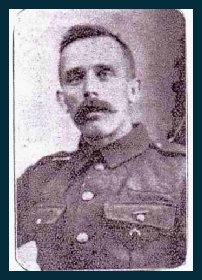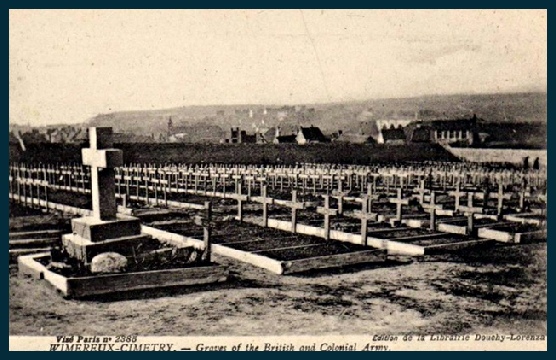Copyright © All rights reserved.



John Mason

John Mason was born in Malton in the second quarter of 1893. He was the son of John and Emma Kitching (nee Hoggart) Mason, who married in the Hull area in the second quarter of 1871. The family moved to Malton from Hull sometime in the 1880s and John continued to work as Tent Manager. In 1901 John and Emma with the four children still at home were living at 12 Cemetery Lane, they younger three at school and the elder son working as a solicitor’s clerk. Ithey seem to have been active members of the Methodist Church in Saville Street as John is recorded on the war memorial there.
1901 Census – resident at 12 Cemetery Lane, Malton
MASON, John, Head, Married, M, 52, Tent Manager (Canvas), Harome Yorkshire,
MASON, Emma K, Wife, Married, F, 49, , Scarbro Yorkshire,
MASON, Thomas C, Son, Single, M, 16, Solicitor's Clerk, Malton Yorkshire,
MASON, Alfred, Son, Single, M, 12, Scholar, Malton Yorkshire,
MASON, Elizabeth A, Daughter, Single, F, 10, Scholar, Malton Yorkshire,
MASON, John, Son, Single, M, 8, Scholar, Malton Yorkshire,
In 1906 John died aged 58 and by 1911 Emma and three of her children were still at 12 Cemetery Road, all of them now in work.
1911 Census – resident at 12 Cemetery Road, Malton
MASON, Emma Kitchen, Head, Widow, F, 60, , Yorks Scarborough,
MASON, Thomas Chapman, Son, Single, M, 26, Solicitors Clerk, Yorks Malton,
MASON, Elizabeth, Daughter, Single, F, 20, Assistant In Yeast Shop, Yorks Malton,
MASON, John, Son, Single, M, 18, Clerk In Grocers Shop, Yorks Malton,
John enlisted as a Territorial in H Company (Malton) of the 5th Battalion of the Yorkshire Regiment though later (probably in 1917) he transferred to the Machine Gun Corps.
The 1/4th and the 1/5th Battalions of the Yorkshire Regiment were both in the 150th Brigade of the 50th [Northumbrian] Division and their activities in the First World War were very similar. Both Battalions went to same areas at the same time and fought in the same Battles -
They were known as the Scarborough or Beverley "Terriers" and originally these two towns, along with neighbouring Driffield, Malton, Pickering, Bridlington, Filey etc provided the Volunteers. Such were the losses during the War that the personnel of both Battalions changed several times. National conscription was introduced at the beginning of 1917. Bulk transfers were sometimes made from one Battalion to another. The Battalion that was decimated on the Aisne in May 1918 was, therefore, unrecognisable from the one that had embarked for France in April 1915 and had by then lost the biggest part of its purely local attachment.
All the units of the Northumberland Divison were mobilised for full time war service on 5 August 1914 and the Malton men, after a time at Scarborough, were moved to their allotted positions on the Tyne defences by mid-
In 1915 the Battalion became part of 150th Brigade, 50th (Northumbrian) Division. In early April the Division was warned that it would go on overseas service and entrainment began on 16 April, landing at Boulogne. By 23 April the Division had concentrated in the area of Steenvoorde. It had arrived just as the German army had attacked at nearby Ypres, using poison gas for the first time, and was rushed into the battle. The Division then remained in France and Flanders and took part in the Second Battle of Ypres.
In February 1916 the 5th were in trenches in the Ypres Salient until 12th February when they were relieved by 4th East Yorkshires and went into close support. Through the Spring of 1916 they continued to alternate between trenches and support sustaining a constant stream of casualties and losses, first around Ypres and then at Kemmel.

By August 1914 he was working for Messrs T. Taylor & Co., a grocery company on Castlegate, but as a Territorial he was among the first group of men to leave Malton on the day after war was declared. They gathered on the night of August 4th, and many were out in the streets of Malton till very late forming part of the large crowds gathering near the “Messenger” offices. The plan was they would leave Malton at 8.30 a.m. for an unknown destination, but it was not until 12.30 that they marched from the headquarters of the Company in Old Maltongate (now Malton White Star Band’s bandroom) through streets lined with an excited crowd. They were preceded by the White Star Band playing lively music as the smartly turned out men were cheered on their way by people waving hats, handkerchiefs and walking sticks and shouting “good luck” and “Good-

It was probably about this time that John Mason transferred to the Machine Gun Corps , joining the 50th Company. The 50th Machine Gun Company joined 17th (Northern) Division on the 12th of February 1916. In the spring of 1916 they were in action at the Bluff, south east of Ypres on the Comines canal then moved south to The Somme seeing action during The Battle of Albert in which the Division captured Fricourt and The Battle of Delville Wood. In 1917 they moved to Arras and saw action in The First and Second Battles of the Scarpe and The Capture of Roeux.
In late summer they moved to Flanders and fought in The First and Second Battles of Passchendaele. They joined with the other Machine Gun Companies of the Division to form 17th Machine Gun Battalion on the 24th of February 1918. Thereafter they served with the 17th (Eastern) Division serving at The Battles of St Quentin and the Avre and the First Battle of of Villers-
This episode (30 March – 5 April 1918), was part of the wider First Battle of the Somme (1918), which took place amidst a strong German offensive on the Western Front in the final year of the war. Falling initially against the British troops in the Somme, throughout the month the German offensive had pushed the Allies back towards Paris. The capture of Villers-
It was presumably during this battle that John Mason sustained the severe wounds in the abdomen, that caused his admission and death in hospital on 12th August. According to a letter received by his family from the hospital, “he was admitted on Friday suffering from severe abdominal wounds and in spite of the best medical skill available succumbed the same day. He was buried in the little English Cemetery adjoining the hospital with the Church of England rites”
He is buried in Wimerereux Communal Cemetery in the Pas de Calais in France . Wimereux was the headquarters of the Queen Mary's Army Auxilliary Corps during the First World War and in 1919 it became the General Headquarters of the British Army. From October 1914 onwards, Boulogne and Wimereux formed an important hospital centre and until June 1918, the medical units at Wimereux used the communal cemetery for burials, the south-
Sources differ about John Mason’s rank – the military lists have him recorded as a private rather than a corporal though both St Leonard’s and the town memorials give him the latter rank. He is commemorated on the memorials in St Leonard’s church and Malton Methodist church, as well as the Town Memorial.
